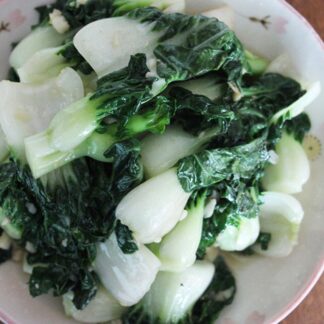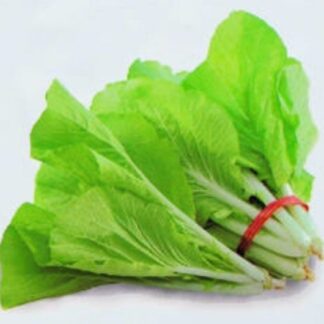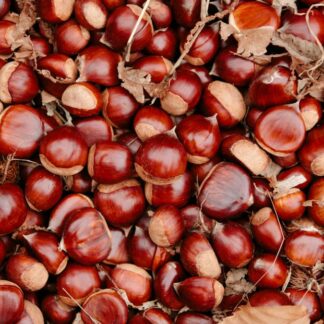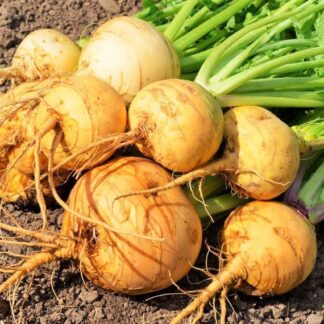Description
600 Seeds Golden Ball Turnip is a globed golden yellow turnip reminiscent of the summer sun. The flavor is sweet, mellow and smooth. It has a wide variety of uses in culinary, delicious prepared raw, roasted, boiled, or stir-fried and the greens are delicious for salads and cooked preparations. Try mashed with shallots for a luxurious preparation. Turnips are easily grown in window boxes or containers on an apartment balcony or patio. Turnip greens are high in minerals and vitamins A and C. Also Known As: American Turnip, White Turnip We ship in 1 business day. Shipped with USPS First Class Mail. Plant Name: Turnip, Golden Ball Latin Name: Brassica rapa var. rapa Days to Germinate: 4-9 Days to Harvest: 55 Germination Rate: 98% Test Date: 7/21 Growth Habit: Root USDA Zones: 2-9 Lifespan: Annual Country of Origin: United States Sunlight: Full Sun, Partial Shade GMO: No Pollination: Heirloom, Open-Pollinated Fungicide-Treated Seeds*: No Seeds Packed For**: 2022 *Fungicide-treated seeds protect the seedlings from diseases until they are up and growing. Do not eat treated seeds. **Seeds are freshly packed for the growing season of the year listed. Seeds are still viable beyond pack date. Store in a cool and dry location such as the refrigerator or basement to best preserve germination rates. Planting Instructions: Soil Preparation and Fertilizing: Turnips are a cool-season crop and do well in the cool temperatures of early Spring and Fall. Turnips can be planted in partial shade and grow best in deep, well-drained soils. To prepare the soil, clear the area of rocks, trash, and large sticks. Small pieces of grass and leaves can be mixed into the soil to make it richer. Spade the soil 10-12 inches deep and completely cover plant material to help it break down more quickly. Enrichening heavy soils with compost can help build large roots. You may optionally scatter 2-3 pounds of a complete fertilizer on the soil for each 100 square feet of garden area. Or 1 cup of fertilizer for each 10 feet of row. If soil has a lot of tight clay, you may optionally add compost after adding fertilizer and rake into top 4 inches of soil. Planting: Plant turnips as soon as the soil can be worked in the Spring. In southern states, turnips can grow well all winter. Soil temperature should be at least 40F for seeds to sprout. Bed the soil into 6-8-inch-tall raised ridges to allow soil to drain and let air enter soil. Space the ridges 18-24 inches apart from center to center. Widen the planting bed next by patting down or dragging the top of the ridge flat with a hoe or rake. This will make an 8-10 inch flat raised planting bed. Use a hoe handle or stick to make a 1/4 inch furrow deep down the center of the ridge. Plant 1-2 seeds in the furrows spaced 1-2 inches apart within the rows. Cover lightly with loose soil then sprinkle with water. For a Fall crop, start planting 8-10 weeks before the first expected frost. During Fall planting, you may cover the seeds with sand or light-colored mulch to keep the row cool. For turnip greens, make 2 or 3 plantings 10 days apart for a continuous supply of fresh turnip greens. (Tip: If you have already spaced the rows 3 feet apart or plan on planting other vegetables after turnips, you may plant 2 rows of turnip seeds per row, 1 down each side of the ridge). Planting Depth: 1/2 inch Within-Row Spacing: 1-2 inches Between-Row Spacing: 18-24 inches Care During the Season: Watering: Water the plants well weekly if it does not rain. Soak seedlings to develop a good root system. You may optionally scratch the soil around the plants lightly with a rake or hand tool to keep the soil from crusting until small plants break through. Weeding: Keep the plants free of weeds, which rob weak root systems of nutrients and moisture. Try not to work the soil more than 1 inch deep to prevent injuring root systems. Thinning: When plants become crowded in the row, thin the turnips by pulling some plants. After thinning the turnip plants should be 3-4 inches apart. Overcrowding prevents turnip roots from developing. Insecticides: Insecticides may be used to protect plants. Bt-based insecticides and sulfur are organic options that can be used for prevention. Sevin is a synthetic option. Sulfur also has fungicidal properties and helps in controlling many diseases. Before using a pesticide, please read the label and always follow cautions, warnings and directions. Diseases: Disease on turnips are most severe in cloudy, damp weather. Check plants daily and treat with an approved fungicide if diseases do appear. Neem oil, sulfur, and other fungicides are available for use. Please always follow label directions. Harvesting: Harvest turnip roots when they are 2-2 1/2 inches in diameter. If left longer they can be tough and stringy. Harvest turnip greens by pulling the entire plant when the leaves are 4-6 inches long. Turnips may go to see quickly when days become long and hot. Turnip roots will keep several weeks in a cool area like the bottom of a refrigerator or root cellar. Unused turnip greens can be spaded in the soil for quick composting. Nutrition Facts: Turnip Amount Per 1 medium (122 g) Calories 34 % Daily Value* Total Fat 0.1 g 0% Saturated fat 0 g 0% Polyunsaturated fat 0.1 g Monounsaturated fat 0 g Cholesterol 0 mg 0% Sodium 82 mg 3% Potassium 233 mg 6% Total Carbohydrate 8 g 2% Dietary fiber 2.2 g 8% Sugar 4.6 g Protein 1.1 g 2% Vitamin A 0% Vitamin C 42% Calcium 3% Iron 2% Vitamin D 0% Vitamin B-6 5% Cobalamin 0% Magnesium 3% *Percent Daily Values are based on a 2,000 calorie diet. Your daily values may be higher or lower depending on your calorie needs.















Reviews
There are no reviews yet.